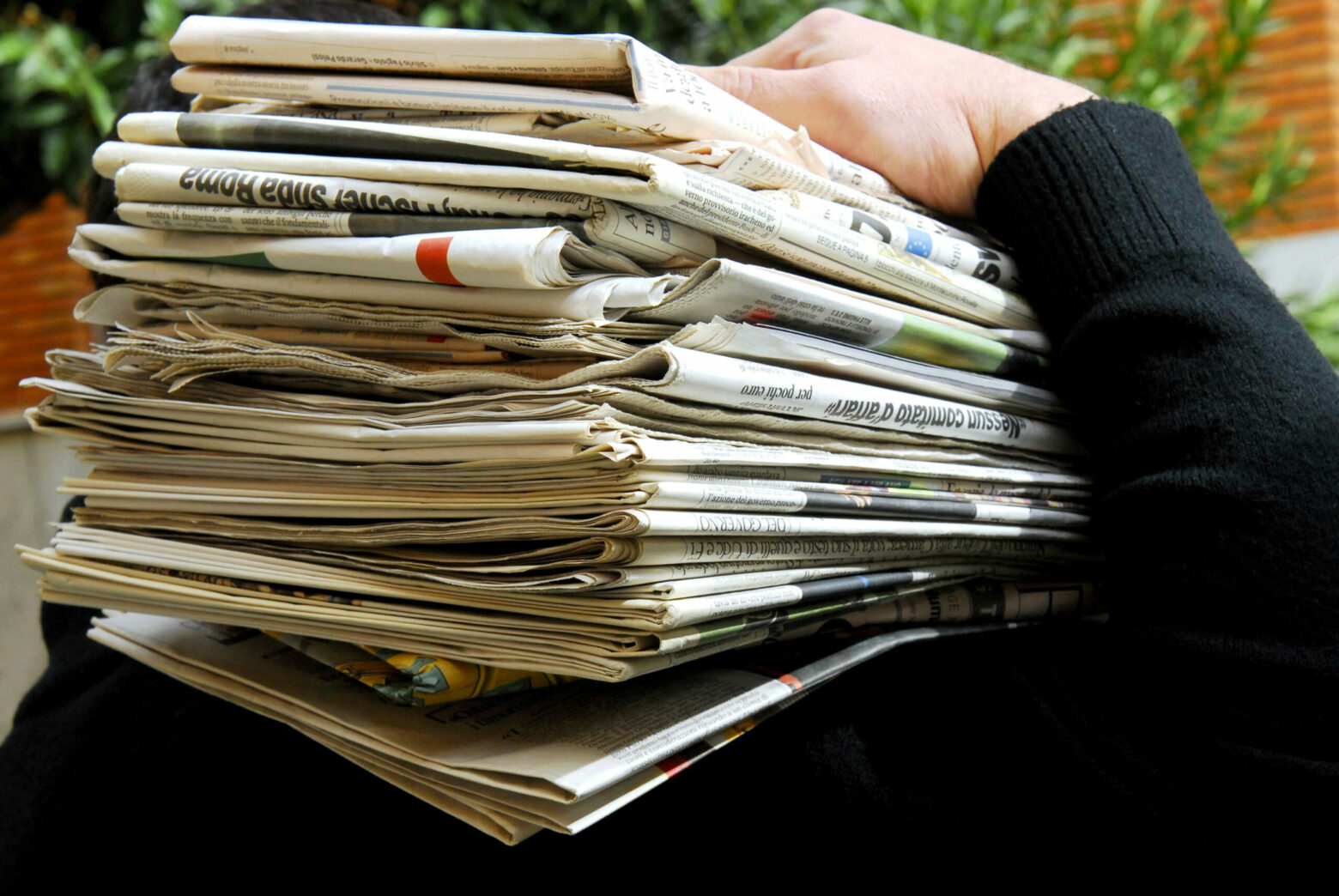Why newspapers sink

The crisis of Italian newspapers is largely linked to an outdated approach to content production. The in-depth analysis of Gregory Alegi, historian, journalist and professor at Luiss
What do we buy at the newsstand when we ask for the newspaper? Anyone who answers «two ounces of printed paper, folded on the long side» lives in the last century. In the 21st century, the right answer is "exclusive content, carefully checked and well packaged." It is not the eternal debate between form or content, but a pragmatic discussion on the need to understand the economic dynamics and the essence of journalistic work in the time of disintermediation.
The starting point
Month after month, the data of the Italian newspapers photograph a generalized crisis.
The decline in sales breaks the virtuous circle on which the press has long been based. Making a good newspaper meant greater circulation, which attracted publicity and secured the resources to make a good newspaper that the public was willing to pay for. The impact of new technologies has broken this balance. The ease with which painstakingly (and expensively!) produced news can be repackaged and redistributed has meant that a newspaper's competitor is neither another newspaper nor radio nor television, but the social universe. From sending the screenshot to the hyperlink on Telegram (ok, I'm a boomer aspiring to Crusca: from the screenshot to the link), from the article printed in pdf to the Dagospia extract, everything reduces the purchase of hard copies and digital subscriptions. On closer inspection, it even reduces the number of people who at a given time decide to watch the same newscast or listen to the same radio newscast.
The newspaper crisis comes from within
The crisis of Italian newspapers is largely linked to an outdated approach to content production. For cultural and contractual reasons, many continue to consider paper a step above the rest, digital as a pure transposition of paper and paper and web editorial offices as two separate things. It goes without saying that mostly young people go to the web "because they are digital natives".
Nothing more wrong. The importance of a newspaper is primarily linked to its reputation for reliability, which cannot be different in its written or digital form. The speed of publication allowed by digital cannot justify the omission of checks and verifications. If the news is the press conference, nothing prevents you from doing live broadcasting, video editing and synthesis with analysis on paper at various times. It doesn't matter if always relying on the same author or providing the footage to a video journalist for editing and asking a third party to elaborate the traditional piece in coordination with columnists and opinion makers. To confirm this, just follow a Trump impeachment hearing on the Washington Post website, read about the latest Boris Johnson scandal on the BBC one or listen to an interview with the New Yorker : if it weren't for the web address (see well, the URL) there would be no way to pigeonhole the service into the ranking types.
It is no coincidence that over 15 years ago over a third of Washington Post journalists were already equipped with a camera and that today the editor of the New York Times no longer approves the printed front page, which is the printed by-product of all the news that's fit to print ("all the news worthy of being published") which is the real product of the newspaper.
Quality first
Always guaranteeing quality to the reader-customer on all the platforms through which the information can be accessed is a less obvious concept than it seems. One example among many is the course on mobile journalism present on the continuing training platform of the Order of Journalists, which spends a lot of time describing the editing apps (with attached verification questions: where is the X key in the Y program) but he doesn't say a word about the risks of direct grip and immediate assembly. Is the report from the front line in Ukraine the same as the investigation into the chaos at the municipality of Rome? Is the chronicle of a funeral the same as that of a strike? Mystery.
On the other hand, the reader-client immediately recognizes the difference between the photocopied articles – not in the sense of plagiarism, but in that of the bleak identity of approach, for which one newspaper is as good as another.
McLuhan was wrong
Pace McLuhan, today the medium is not the news. In a multi-platform system (which is different from multimedia), the distinctive element is not the technique with which the content is offered, but the process through which it is decided that a certain story is worthy of being brought to the attention of the public. In the long run (but not that long, then) the public realizes that there is little or nothing behind the click-catcher titles, the alluring pieces, the blatant ideology, and abandon the masthead.
The evident inability to replace the paper readers of 20 years ago with a new generation of digital readers can be explained precisely by the failure to transfer the old editorial mentality ("respect for the substantial truth of the facts" of the law establishing the Order of Journalists" ) to the new generation of publishers and web authors, for whom the quantity (of clicks, it goes without saying) is itself an index of quality.
But, as Lincoln would have said, You can't fool all the people all the time. (“You can't fool everyone all the time”). Without quality, readers are unwilling to pay for either the traditional hard copy at the newsstand or the digital one on their phone, tablet or PC. And the numbers plummet…
This is a machine translation from Italian language of a post published on Start Magazine at the URL https://www.startmag.it/economia/vendite-giornali-cartacei/ on Sun, 30 Jul 2023 05:49:30 +0000.
